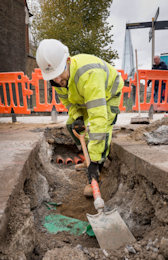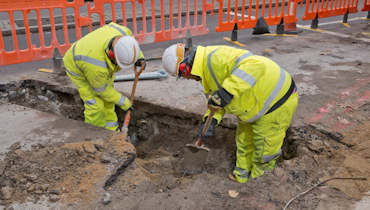Will writes:
We’re working closely with client CVU to mitigate the risk of cable strikes.
We have a major contract with CVU (Colas, Volker Highways, URS JV) to upgrade traffic signals, roads and footways in London.
Unfortunately we often come across services which have not been installed to industry standards. Additions and ad hoc repairs to cables and utilities mean that services are not always located as charted, or installed at the correct depth. Consequently, drawings are out of date, and this considerably increases the risk of cable strikes.
We work closely with CVU engineers throughout the project to mitigate this risk. This starts with assessing the pre-construction information and carrying out investigations including ground penetration radar. Workers are also fully briefed, wear full PPE, and use insulated tools.
In addition:
- We’re investing in the latest developments in digital cable avoidance technology
- We have revised our communication processes, including daily checklists and daily reviews of permits
- We work with CVU on site-by-site risk management from the very start of each project
- We have implemented a more stringent permit-to-break-ground system that we developed in collaboration with CVU.

HQSE manager Richard Wheeler and I are working closely with LoHAC (London Highways Alliance Contract) contractors working for CVU and Transport for London to develop a safety forum on buried services, including sharing best practice on searches, permits and working methods.
[cta h3_text=”If you’re interested in how we can deliver complex projects in high-profile areas,” link_text=”please get in touch with me.” /]
If you would like to join our skilled and experienced team, fill in our registration form.

